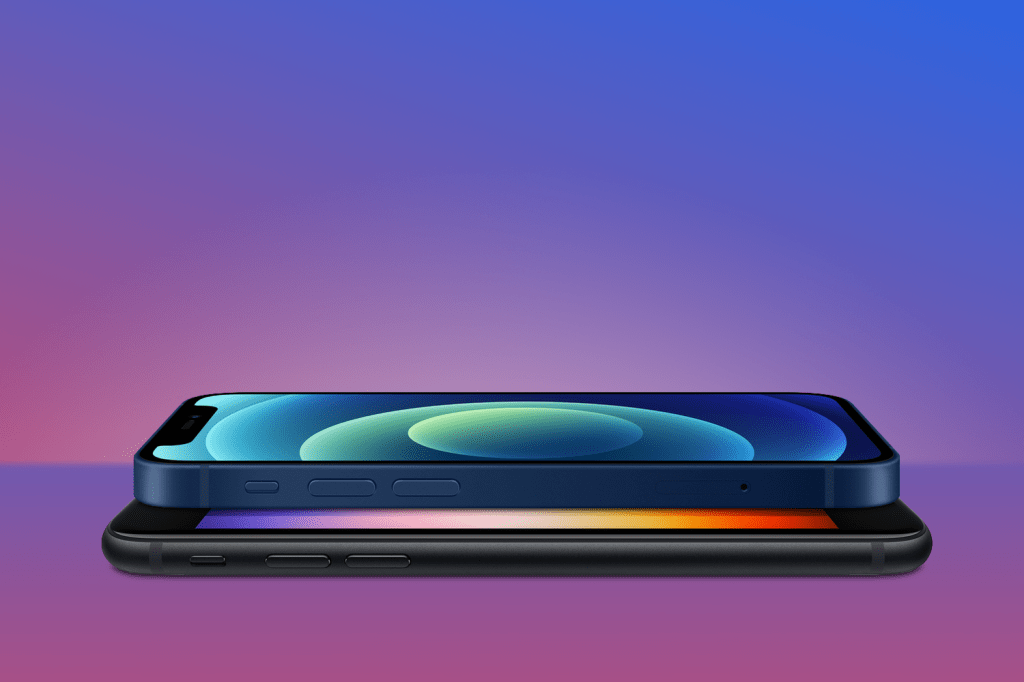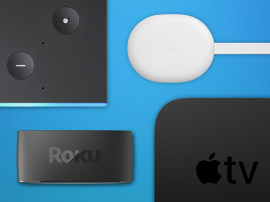Best cheap iPhone: iPhone SE vs iPhone 13 vs iPhone 13 Mini
How do Apple’s cheapest handsets stack up against each other and which budget iPhone is right for you?

Want to buy a budget phone? And want that to be a budget iPhone? Your options aren’t quite as extensive as they once were, but Apple still has a handful of sensibly priced models for anyone who can’t (or doesn’t want to) stretch to the latest flagship.
The obvious choice is the third-gen Apple iPhone SE; styled like its predecessors, it adds useful upgrades such as 5G connectivity and more powerful Apple silicon. Starting at £429/$429 for the 64GB variant, it’s easily the cheapest smartphone in Apple’s current line-up. And with Apple having retired the iPhone 13 Mini, it’s the smallest model on offer too.
But with the iPhone 13 now acting as the “entry-level” mainstream iPhone, should you still opt for the iPhone SE? Or is it worth shelling out more for something a little more modern? And are there still deals to be found on the iPhone 13 Mini if you’re prepared to shop somewhere other than the Apple store? Read on to find out which Apple handset offers better bang for buck.
Budget iPhone tech specs
| iPhone SE (2022) | iPhone 13 | iPhone 13 Mini (third-party retailers only) | |
| Display | 4.7in LCD, 326ppi | 6.1in OLED, 460ppi | 5.4in OLED, 476ppi |
| Dimensions | 138.4×67.3×7.3mm | 147x72x7.7mm | 132x74x7.7mm |
| Weight | 144g | 174g | 141g |
| Processor | A15 Bionic | A15 Bionic | A15 Bionic |
| Cameras | 12MP (rear), 7MP (front) | 12+12MP (rear), 12MP (front) | 12+12MP (rear), 12MP (front) |
| Storage | 64/128/256GB | 128/256/512GB | 128/256/512GB |
| Battery | 15 hours (video) | 19 hours (video) | 15 hours (video) |
| Security | Touch ID | Face ID | Face ID |
Price: it’s all in tiers
As above, the Apple iPhone SE (2022) starts at £429/$429 for the 64GB variant. That increases to £479/$479 for 128GB of storage space, or £579/$579 if you need the largest 256GB capacity. Those numbers make the third-gen SE Apple’s most affordable smartphone by a clear margin.
By comparison, the iPhone 13 starts at £599/$599 for 128GB of storage space, rising to £699/$699 for 256GB, topping out at £899/$899 for 512GB.
The iPhone 13 Mini – a shrunken down version of the iPhone 13 with largely similar hardware – slotted neatly between the two handsets while Apple sold it officially. It has been discontinued for a while now, but third-party retailers still have stock if you shop around. Typically the 128GB version will set you back £599 in the UK for a new unit; the US stores we checked were only offering refurbished units for around $430.
Design: distinctive siblings
They might share a lineage, but only two of these devices share a design philosophy; the other is more of a throwback.
The iPhone 13 and 13 Mini adopt the retro-futuristic look still favoured by Apple for its current flagship devices. Aping the flat-panel chassis of the iPhone 4, it benefits from an aluminium frame and comes outfitted with a sturdy Ceramic Shield screen covering. As the Mini moniker suggests, the smaller model’s dimensions strike a balance between palm-filling and pocket-friendly, standing 132mm tall and fronted by a notched 5.4in display.
What about the SE? Despite the hardware updates, it sticks with the look of its predecessor – a look borrowed from the iPhone 8, first seen in 2017. It’s a shell that’s aged pretty well. There’s a certain timeless appeal to the aluminium and glass chassis, giving the SE nostalgia value. Plus Apple has upgraded the back panel with the iPhone 13’s tougher glass.
That said, there’s no escaping that the hefty bezels above and below the SE’s 4.7in display look distinctly dated in 2022. And because of those bezels, the iPhone SE is actually taller than the iPhone 13 Mini by 6.9mm, despite the former’s smaller screen. A small, affordable iPhone is no bad thing, but those chunky borders look like a clear waste of precious space in this era of all-screen smartphones.
• The one that came before: Apple iPhone SE (2020) review
Display: small, medium & large

Apple’s affordable trio offer very different display options. The third-gen iPhone SE serves up the smallest screen of the lot, with a 4.7in panel that’s unchanged since from the previous edition (or the iPhone 8). It’s ideal for those who prefer a compact display they can easily reach a thumb across, but it’s also the clearest point of compromise on the SE. Yes, it’s perfectly serviceable for everyday use. It’s bright outdoors and sharp enough at 326 ppi. But there’s no OLED wow factor here: it’s LCD all the way.
In contrast, the iPhone 13 Mini ships with a 5.4in OLED Super Retina XDR display, with up to 1200 nits HDR maximum brightness. Translation? Deep blacks, vibrant colours and immersive contrast. It’s also significantly sharper at 476 ppi. That 5.4in dimension makes the iPhone 13 Mini the Goldilocks option for most people, offering more screen real estate than the iPhone SE, in a package that doesn’t dwarf your paw. It’s not really miniature, but not really massive – simply manageable.
As for the iPhone 13, it ships with the biggest screen of the three devices, measuring in at frame-filling 6.1in. Pixel density is slightly lower than the 13 Mini, at 460 ppi, but you’d need a magnifying glass to notice. It delivers the same HDR10 and Dolby Vision video, and hits the same 1200 nits peak brightness. If size matters, this is the affordable iPhone to go for.
Cameras: two against one
One area where Apple’s former mainstream models have the clear upper edge is in the camera department. Both the iPhone 13 Mini and the iPhone 13 share the same pair of 12MP rear cameras. One is a standard wide-angle snapper, the other an ultra-wide for capturing more of a given scene. They use the same front-facing sensor, and can capture Dolby Vision HDR video.
No such luck for the latest iPhone SE: it’s still equipped with the same single sensor on the back, which means you’re stuck with a single focal length. That said, its 12MP f/1.8 wide-angle camera has been capturing solid snaps since it launched on the iPhone 8.
Apple has also promised improvements to “computational photography”, courtesy of the A15 Bionic processor inside the third-gen iPhone SE. These include Smart HDR 4 for sensitive colour and contrast adjustments, support for Live Text content detection in the Camera app, plus improved noise reduction when recording video in low light.
With just a single sensor, the SE will never be as versatile as the iPhone 13 or 13 Mini – nor will it deliver the same depth of field effects in Portrait Mode. But it will still be capable of capturing very clean images in most conditions.
Performance & battery life: close run thing

Just as the last iPhone SE launched in 2020 with a processor borrowed from its contemporary flagship stablemate, so its successor comes equipped with Apple’s A15 Bionic processor – a chip it shares with the iPhone 13 and 13 Mini.
That gives the third-gen iPhone SE some serious performance potential, meaning it’s no slouch when it comes to multi-tasking, gaming and image processing. The biggest gains from the upgraded chip will likely come in the efficiency stakes, with the A15 demanding less power from the SE’s battery.
Speaking of which, Apple claims that improved battery chemistry, the efficient A15 chip and “tight integration” with iOS mean the upgraded cell inside the iPhone SE can now match the iPhone 13 Mini on longevity. Apple doesn’t publish mAh capacities for the cells in its smartphones, but both devices are quoted as good for up to 15 hours of video playback. Only the iPhone 13 trumps that, promising 19 hours.
Features & perks: saving face

One of the headline additions to the third-gen iPhone SE is 5G connectivity, which allows the most affordable iPhone in 2023 to connect to the fastest mobile data networks (where available). This brings it level with the iPhone 13 and 13 Mini, which also feature 5G connectivity.
The iPhone SE (2022) ships in 64GB, 128GB and 256GB storage capacities; the iPhone 13 and 13 Mini start at 128GB and top out at 512GB. All three models support both wireless and fast charging, with a compatible adapter, and all three devices can run the latest version of Apple’s iOS software.
As the presence of a Home button suggests, the updated iPhone SE still relies on Touch ID for security. There’s no support for Face ID – so you’ll need your fingerprint ready to unlock it. Cynical upselling or a clever cost-cutting compromise? Probably a bit of both. Those who continue to enjoy the form factor of the iPhone 8 will probably still be happy to use the familiar fingerprint sensor setup. And those who want a full-screen phone with Face ID can stump up for the iPhone 13 or iPhone 13 Mini instead.
• Ranked: Every iPhone in order of greatness
Verdict: which cheap iPhone is better?

Spec sheets fully considered, picking between the three cheapest iPhone models in 2023 is no mean feat. The iPhone SE (2022) and iPhone 13 are still available directly from Apple – and the price difference between their 128GB versions spans just £120/$120. You could save more cash with the 64GB iPhone SE, but that’s such little storage we’d recommend against it.
If you want the full-size iPhone experience and don’t need the absolute latest in performance, the iPhone 13 is now our top pick. Yes, it’s pricier than the iPhone SE, but the fresher design, dual cameras and better display more than make up for it.
The iPhone SE’s throwback shell is pretty big, yet it features an LCD screen that’s less vibrant and smaller. It still delivers just enough highlights to make it tempting for the price: 5G, 15-hour battery life and Apple’s A15 processor. If you’re upgrading from anything older than an iPhone X, the SE is a compelling choice for those who don’t want to break the bank.
The iPhone 13 Mini is the outlier. Now that Apple no longer sells it officially, you’re reliant on retailers having stock – or going with a refurbished unit. It’s got a full-frontal display, Face ID, dual-camera setup, 5G connectivity and a speedy processor. And its dimensions strike a neat balance between portability and usability, so might be worth the effort it takes to track one down.



